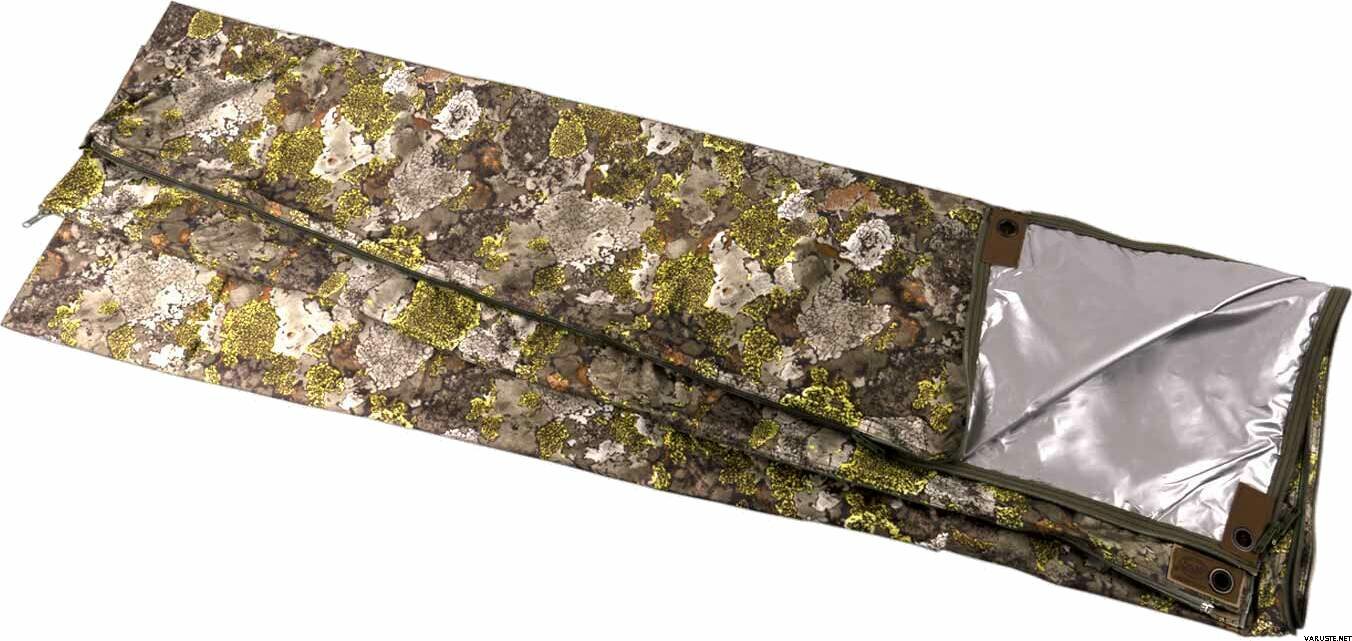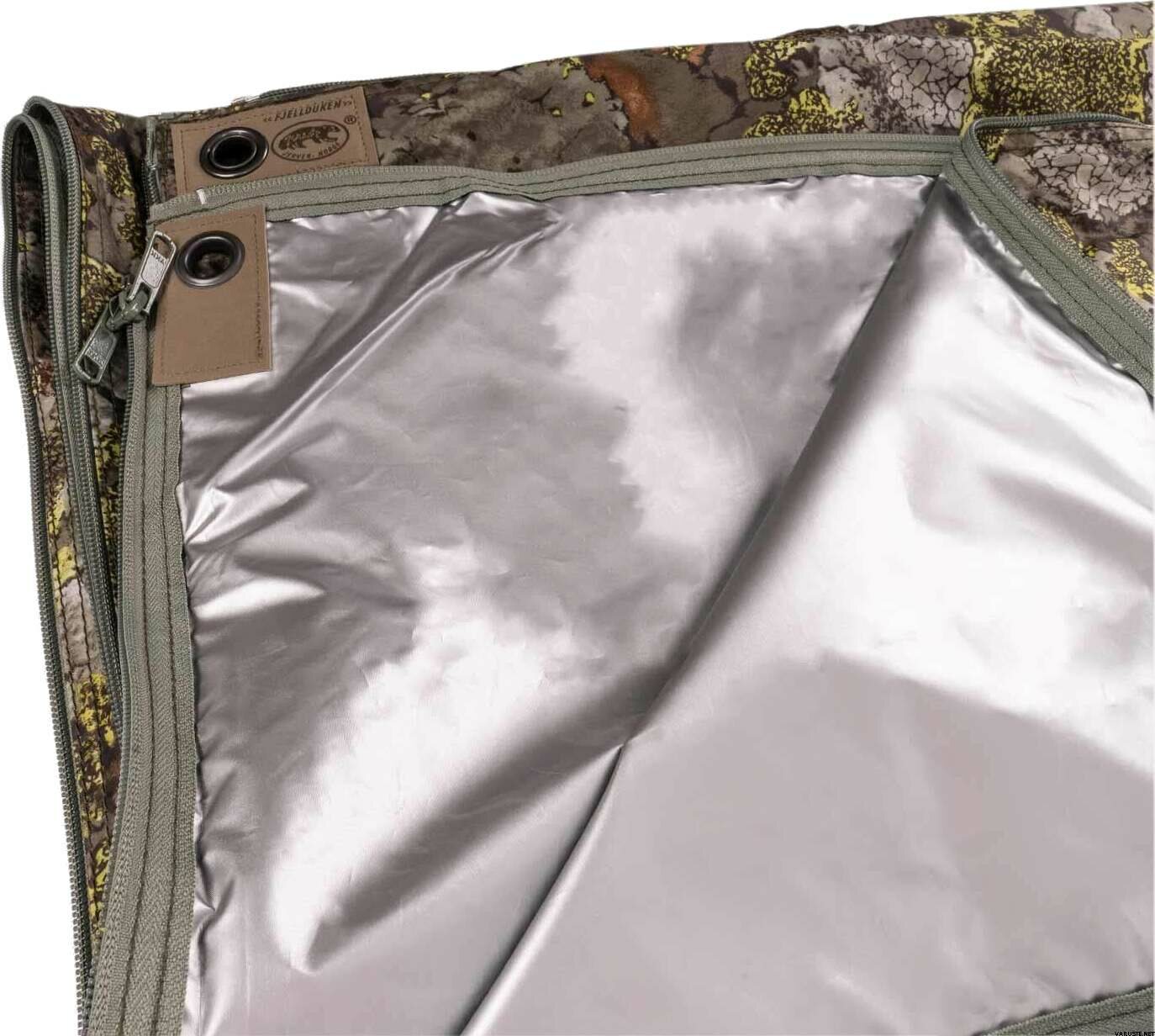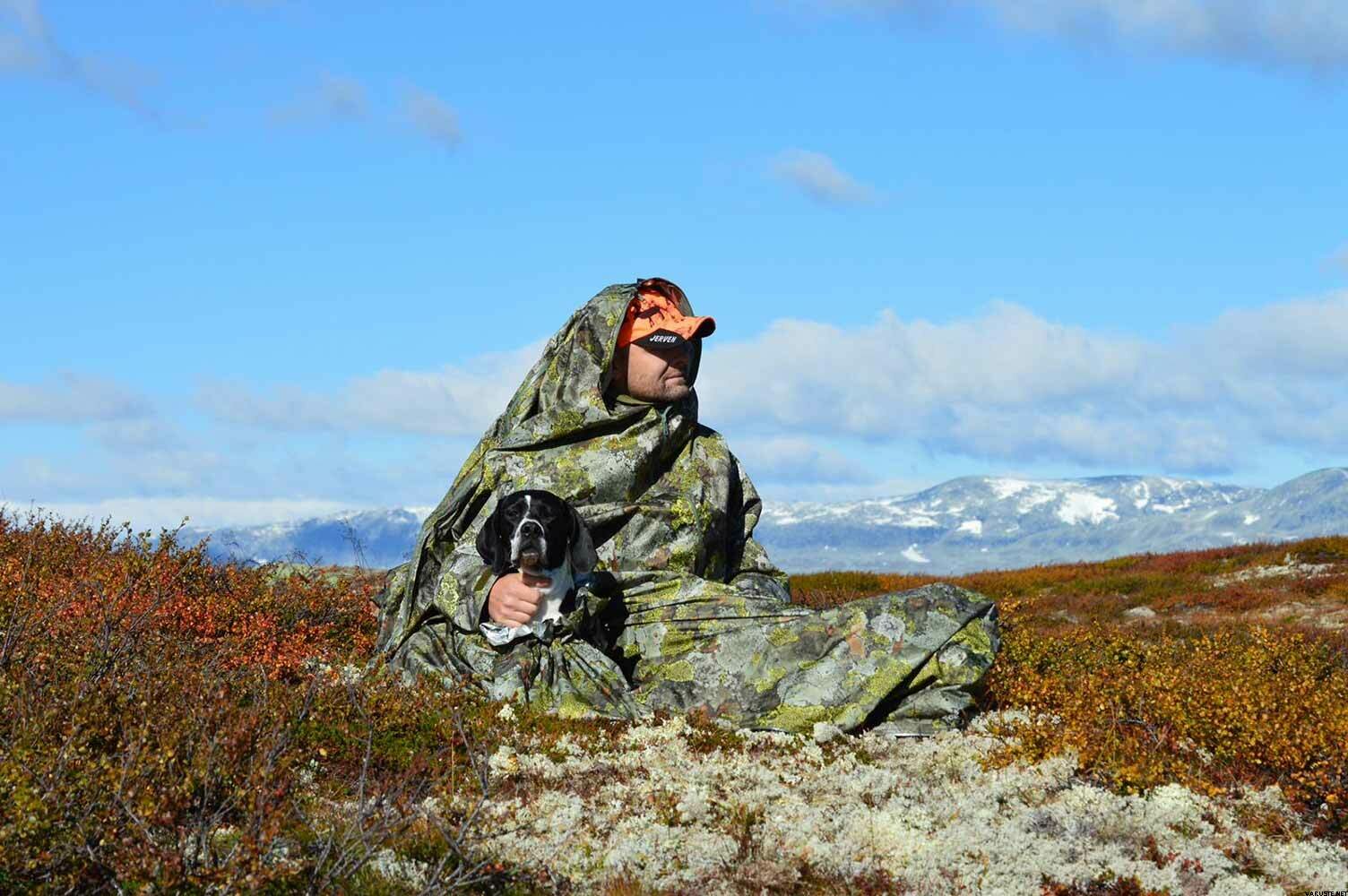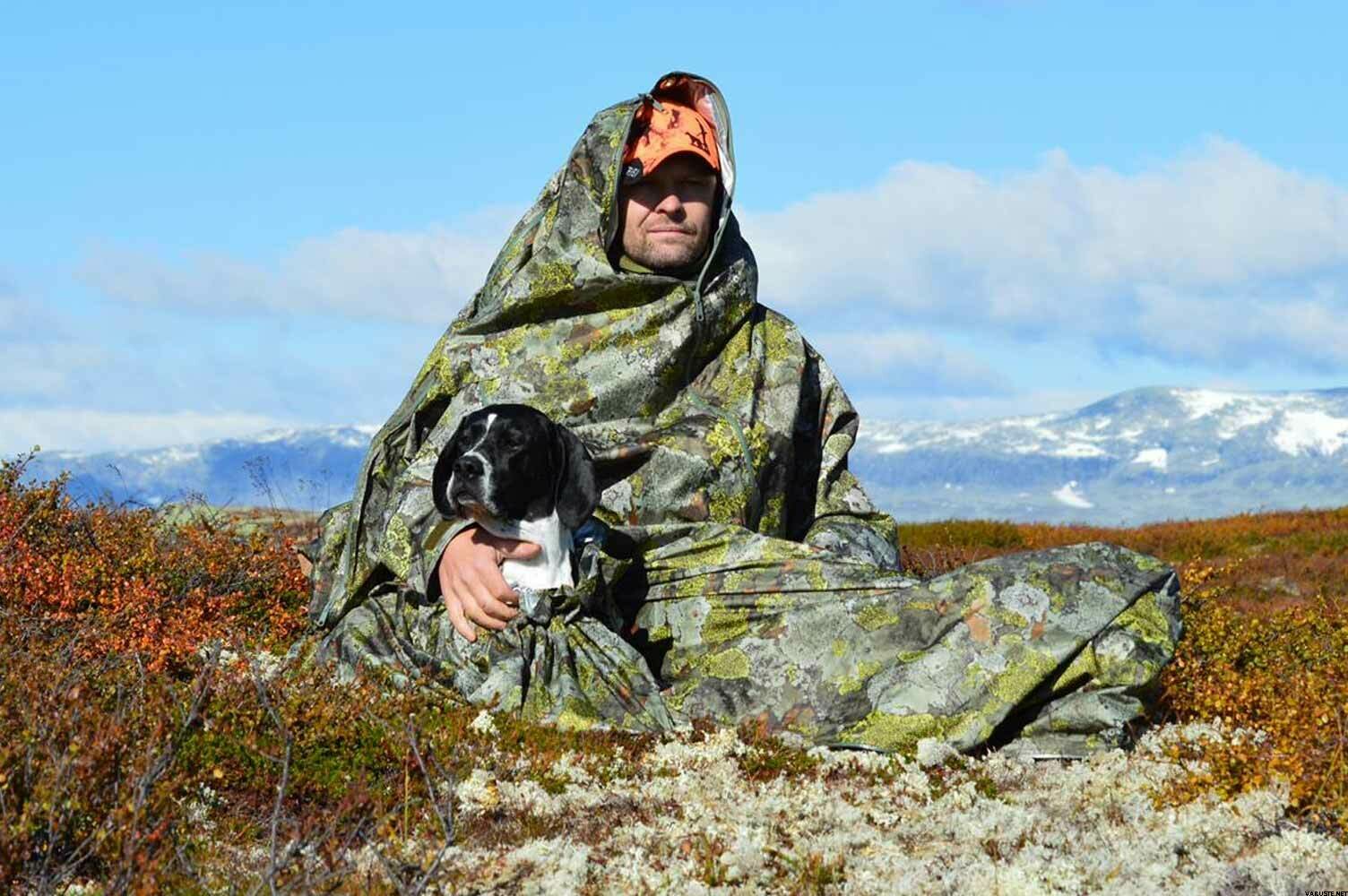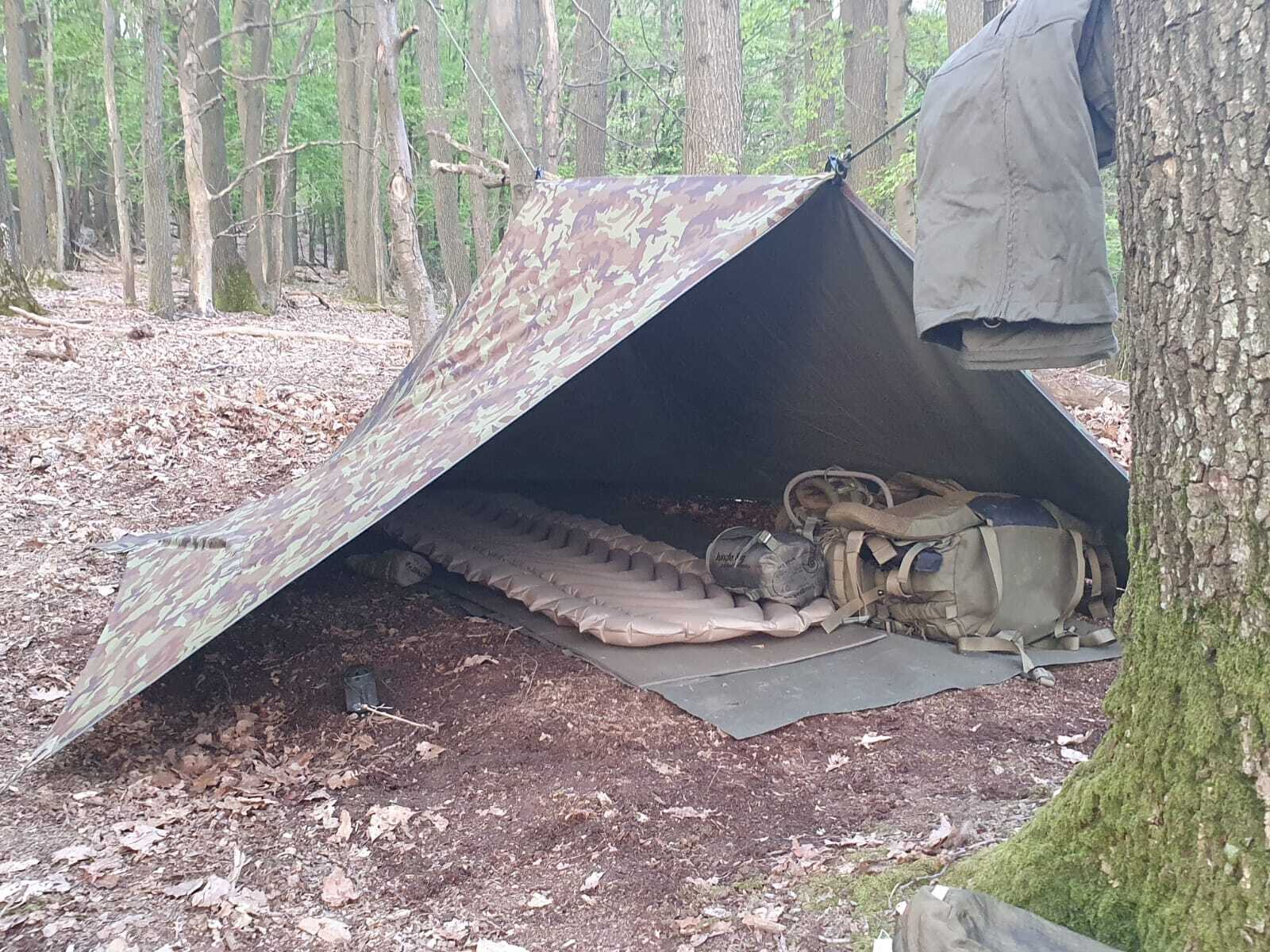
Jerven Original
Immediately
Detailed availability
Location Store (Helsinki): Hunting, Zone 22, warehouse
Reviews
| Overall rating | (38 reviews) |
Product description
Weight: 650 gram - 143x143 cm.
A piece watertight of material, with zippers around the edges. Aluminium coated on one side, camouflage colored on the other. A big enough poncho, big enough to be used as a wind sack - for sitting in it. That’s the way it all started, and The Jerven bag Original has been, and will remain unchanged! To put it in another way; the
wheel cannot get to be more round.
Admittedly, we have made several new models of The Jerven bag, but those will always be in addition to, not instead of The Jerven bag Original.
This the single layer, light Jerven bag, which is permanent contents in the backpack.
And that’s the strength. It’s there!
The minus is, that it creates condensation. The outer material is completely tight, but that is deliberate. Breathing materials are not tight enough when you’re sitting in the soaking wet marsh. In addition, the materials let out heat. Oh, well. When you don’t want to carry more than 600 grams, that’s what you get. Yet, a single layer bag is still a thousand times better than no bag!
This is the bag for the small game hunter, the fisherman, the hiker and others,
who are spending time outdoors.
Weight
0,65 kg
Country of origin
Attachments
| Jervenduken_esite.pdf |
Comments
| Overall rating | ☆☆☆☆☆ |
 — Show original
— Show original| Overall rating |
Excellent backup survival piece of Kit, practical and functional both as a bivvy, an extra sleeping bag, poncho, tarp and even folded as a bum cushion
| Overall rating |
What a great product. I used the system during a rainstorm and kept me totally dry and warm. Will be purchasing another soon. Keep up the great work.
| Overall rating |
Simple, top quality, reliable and super versatile.
| Overall rating |
My bad-weather insurance when I go hiking.
Brand
Products that have often been purchased with this product:
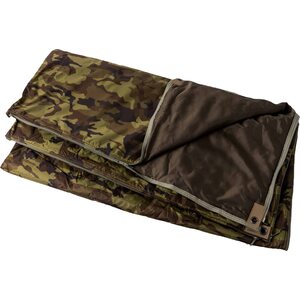
(327,50 €, VAT 0)
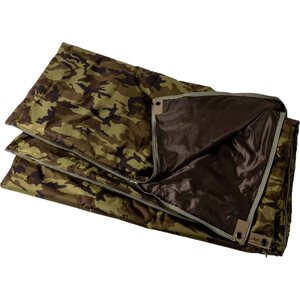
(296,25 €, VAT 0)

